Deep Dark World Is Being Exposed, Freedom Of Information [truth] = Game Over – Ep. 2900
Podcast: Download (Duration: 1:23:49 — 37.7MB)
Watch The X22 Report On Video
![Deep Dark World Is Being Exposed, Freedom Of Information [truth] = Game Over](https://x22report.com/wp-content/uploads/2022/10/website_newsbrief_10162022_2.jpg)
Economy
- “DON’T STOP ME NOW!” Citizens of Belgium fill the streets to protest a number of issues: the EU, World Economic Forum, the media, and more. This is a continuation of a series of protests that’s occurred over the last few months.
- The German government has declassified a damming risk assessment conducted just months prior to the February invasion of Ukraine in which the then-Merkel-led government determined that the nation’s energy security “won’t be jeopardised” by an increasing reliance on Russian gas.
- In a stunning display of arrogance and shortsightedness from the German government, a classified security document produced in October of last year on the issue of the now-scuppered Nord Stream 2 pipeline, the government of Angela Merkel determined that “granting of certification [for Nord Stream 2] does not jeopardize the security of gas supply in Germany and the European Union.”
- “For both the German and neighbouring markets, the risk of serious impairments to supply security due to the failure of individual import supply infrastructures is very limited,” the assessment added.
- The Inflation Reduction Act, which President Biden signed Aug. 16, created a tax credit for consumers who buy new electric vehicles.
- The clean vehicle credit is worth up to $7,500. It’s nonrefundable, meaning buyers need to have a federal tax liability to get full or partial benefits.
- The credit also comes with assembly, manufacturing and other requirements that may initially limit consumers’ tax break.
But it may be tough for consumers to get the full value of the tax credit — at least initially.
High-income consumers would generally be most likely to benefit from the full credit value relative to those with more modest earnings, since they typically have larger tax bills, Herron said. But the credit comes with some additional restrictions — such as an income cap, explained in more detail below — that will restrict how many of those households can benefit.
Meanwhile, middle- and lower-income buyers typically have smaller tax bills, meaning it’s more likely they wouldn’t collect the full credit, Herron said.
Source: cnbc.com
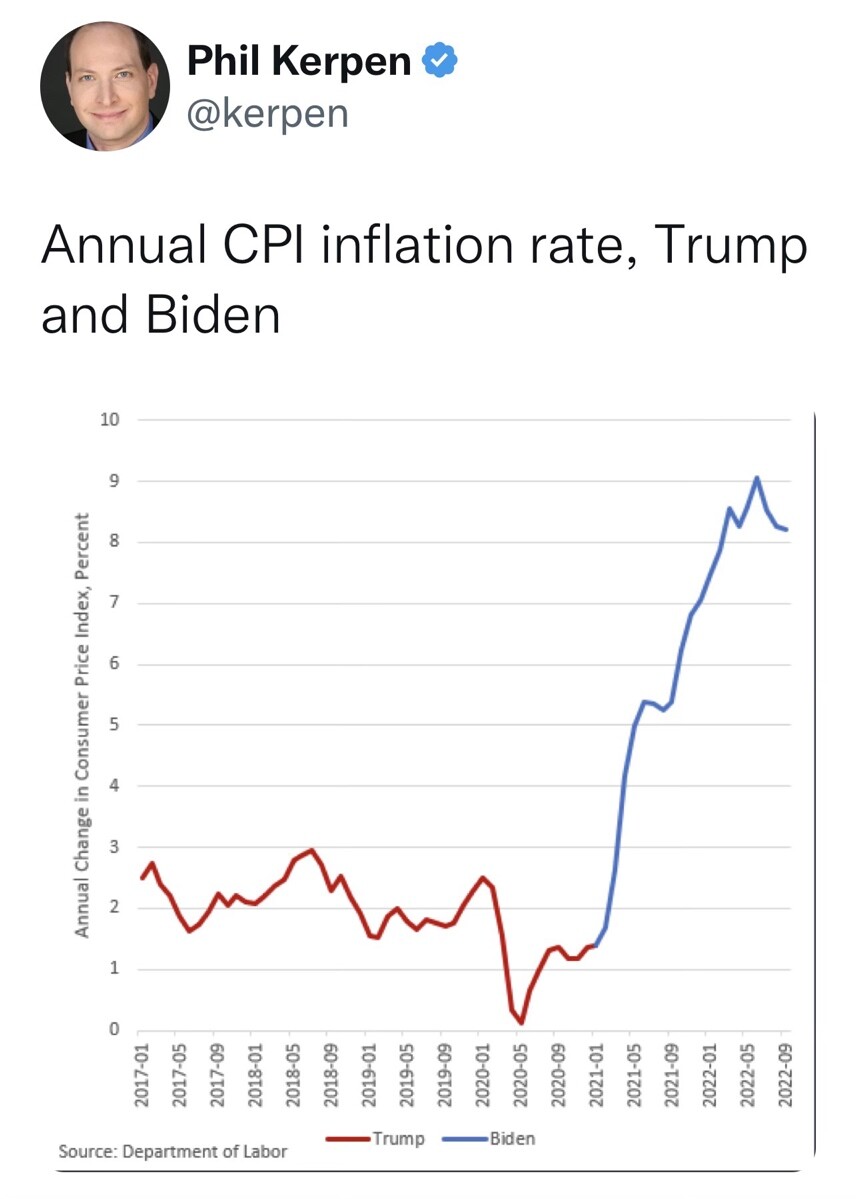
- One year after the Fed was rocked by a trading scandal which cost the jobs of three Fed henchmen, including Dallas and Boston Fed presidents, Kaplan and Rosengren, and Fed vice-chair Richard Clarida (who couldn’t wait to be sacked for cause or otherwise just to get back to Pimco) after financial disclosures showed they had been trading extensively in individual stocks in 2020 during a period in which the Fed engaged in extraordinary market interventions as a result of the coronavirus pandemic, moments ago Atlanta Fed president Raphael Bostic joined the club of inglorious Fed traders when he revealed he had improperly disclosed financial transactions for the past five years because he incorrectly interpreted policies governing personal investments.
- As the WSJ reports, according to amended disclosures filed Friday, dozens of sales or purchases of mutual funds and other investment vehicles by Bostic hadn’t previously been disclosed. Adding insult to injury, more than 150 of those transactions had settled on dates when they weren’t allowed because they were during blackout periods before and after Fed policy meetings. And the cherry on top: last year Bostic also held more than $50,000 in Treasury securities, exceeding the then-permitted limit on such holdings for Fed officials.
- Bostic said the lapses were due to his flawed interpretation of central bank policies.
Source: zerohedge.com
- “Taxes Have Consequences” uses in-depth research to tell the real tax history of the United States. My administration built on this history when we cut taxes in 2017. Here is the full story from over a century of our American past. amazon.com/Taxes-Have-Conseque
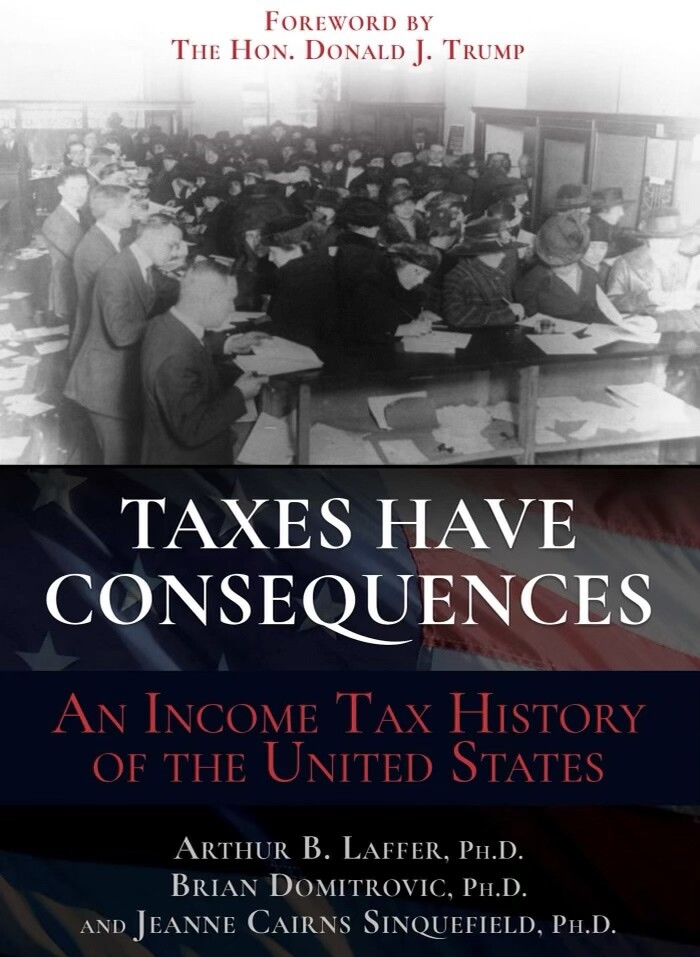
Political/Rights
Discovery Executive: "He does not have a place in the new CNN. He reminds us of the Zucker period we are looking to move far from. The only reason he is still on air was not to look like we were 'cleaning house' for political reasons right after the closing"
— Jon Nicosia (@NewsPolitics) October 11, 2022
The person this Discovery exec was talking about is Jim Acosta. CNN (like they did when I reported about Stelter being let go) will be to defend the person. That’s what network PR people do. Keep in mind many of the recent people let go had big support within the network /more
— Jon Nicosia (@NewsPolitics) October 14, 2022
- On Day three of the Igor Danchenko trial, U.S. District Judge Anthony Trenga acquitted Russian national Igor Danchenko on one of five counts against him.
Day 3 of the Igor Danchenko false statements trial started with the testimony of Democrat activist and Clinton ally Charles Dolan. For background, Dolan has historic ties to the Democrat party, was a state chairman of Bill Clinton’s 1992 and 1996 presidential campaigns, and was an advisor to Hillary Clinton’s 2008 presidential campaign.
And he was also a source for the Steele dossier.
Dolan’s connections to Russia began from his consulting work, where he served to attract foreign investments into Russia in the 2000s. As part of that job, he would have regular conference calls with the spokesman for Russian President Vladimir Putin and had occasional meetings with other Russian officials. Other work, such as assisting Disney in obtaining a broadcast license, would keep him connected to Russia.
Dolan was introduced to Igor Danchenko through Fiona Hill in the spring of 2016. I’ll let Dolan explain:
That friend Danchenko was trying to assist was a woman by the name Olga Galkina. Dolan would eventually meet with her in Cyprus in March of 2016. Galkina would eventually become relevant to the Dossier story.
Danchenko and Dolan kept in touch, meeting from time to time. Part of the reason they stayed connected was because of the “potential opportunities” Dolan’s firm (kgobal) and Danchenko’s employer, Orbis, might pursue. (The business opportunities never presented themselves.)
In May 2016, Dolan reached out to Danchenko because he would be traveling to Moscow to attend a conference at The Ritz-Carlton. Dolan eventually traveled to Moscow in June 2016. At that time, Danchenko was already in Moscow and the two met in that city. Dolan returned to the US and he and Danchenko remained in occasional contact.
All this background information was necessary to help establish the Dolan-Danchenko relationship. From there, Special Counsel Michael Keilty produced an e-mail where Danchenko reached-out about the Trump campaign:
Source: thegatewaypundit.com
- It was the final FISA deception, not merely the FBI’s reliance on the uncorroborated Steele dossier, that led to the illegal surveillance of Carter Page.
- Special Counsel John Durham’s deft questioning of FBI agent Brian Auten during the prosecution of Steele-dossier primary sub-source Igor Danchenko confirmed the Crossfire Hurricane team obtained permission to surveil U.S. citizen Carter Page without first verifying the dossier’s claims. While scandalous, the Justice Department’s deceptive framing of Christopher Steele’s source network as connected to his prior work with British intelligence is worse because the higher-ups who authorized the inclusion of this detail in the final revision of the application knew a FISA warrant would likely be denied without the misrepresentation.
-
portions of the Steele dossier “played a significant part” in the Carter Page FISA applications. The special counsel reiterated that point regularly during the first few days of the trial while stressing — in question after question — that the FBI had failed to corroborate the allegations.
- The FBI’s use of the uncorroborated Steele dossier was not the FBI’s worst offense, however. Worse still was the Crossfire Hurricane team’s last-minute amendment to the FISA application that misleadingly framed Steele’s source network as one established during his time as an MI6 agent, when, in fact, neither Danchenko nor any of Steele’s other dossier sources had been sources during his time with British intelligence.
- While Steele would later confirm for the inspector general that his source network did not involve sources from his time with MI6, but “was developed entirely in the period after he retired from government service,” from Auten’s detailed trial testimony, we now know that the Crossfire Hurricane team either knew Steele’s source network was not connected to British intelligence or knew that it could not, in good faith, make that representation to the FISA court.
- So the FBI undertook to obtain the first FISA warrant on Page, the OIG explained that the day before the FISA court granted the surveillance order, the government submitted a “read copy” of the FISA application to the FISA court’s legal adviser for a preliminary assessment of any issues. The FISA court’s legal adviser asked the attorney working with the FBI on the application “how it was that Steele had a network of subsources?”
- The government lawyer “provided additional information to him regarding Steele’s past employment history,” the OIG report explained; that response implied Steele’s source network came from his time with MI6. Significantly, the FISA court’s legal adviser then indicated the additional detail of Steele’s prior work with British intelligence should be included in the official FISA application to the court.
Testimony:
"We had been instructed at the [Mueller] SCO not to take further action on the matter involving Mr. Dolan and Mr. Danchenko's relationship." pic.twitter.com/658G4nXqRi
— Techno Fog (@Techno_Fog) October 16, 2022
Perhaps Robert Mueller was lying when he said the Steele Dossier wasn't in his "purview."
Maybe his team withheld evidence.
But there's no doubt – what he told Congress was 100% false. His team conducted an extensive Steele Dossier investigation. pic.twitter.com/kOhDgN5liX
— Techno Fog (@Techno_Fog) October 16, 2022
Durham forced the FBI to say that they knew the steele dossier was not real
The FBI did not verify the dossier
So the question is, what is on the recordings?
Will these recording be released?
So what do we know so far
- Dossier is fake and the FBI knew this
- Knowing this Danchenko became a CHS
- The FBI paid steel and danchenko
- The FBI knew the dosseier was fake andwent with it any way and used it to get the FISA Warrants.
Don't think the repercussions of Danchenko's 3.5 year stint as the FBI's go to guy for Russia have sunk in yet:
-24 new case files that may be based on fabrications
-potential involvement in Ukraine issues?
-Trump impeachment?
-Hunter stuff?
-"Russian disinformation" hoaxes?
etc https://t.co/kXhjCf3vLk— Hans Mahncke (@HansMahncke) October 16, 2022
- The revelations of FBI malfeasance, egregious conduct and flagrant lies revealed over the last few days during the Durham trial expose the agency’s willingness to interfere and impede the will of the American people and the administration of the 45th president of the United States, Donald J. Trump.
- The FBI is not alone in this coup perpetrated against our nation.
- For years, Americans were force-fed lie after lie by the propaganda press doing the dirty work of the Obama-Biden gang and their half-wit minions at the Department of Justice, FBI and others that caused havoc across our country and sought to destroy lives and families. Mine included.
-
Advertisement – story continues below
- I will not stand still for this, and neither will the hard-working citizens of this nation.
- My family and I are owed an apology and we, the American people, are due accountability for the assault on our Constitution they swore to uphold, yet deserted.
- Now, Americans learned the FBI offered to pay $1 million of taxpayer money to a foreign spymaster conspiring with the Clinton campaign and others, plotting against America and striking at the heart of democracy and the republic. The extent to which they would go to destroy America had no boundaries.
- What is left is a divided nation at grave risk of being lost to socialism and turned into a dictatorship by an anti-America cabal of elitists who have wrecked the rule of law and have been caught attempting to steal the future of our children and grandchildren.
- It matters less to me if these thugs spend the rest of their lives in jail, for this is the most consequential time in our nation’s history, and if we don’t correct the path this country is headed down, we may be seeing the last vestiges of the America our Founders envisioned — a free nation of self-governed citizens emboldened with their God-given rights of life, liberty and the pursuit of happiness.
- Thank God the truth has broken through since the Durham trial began. Truth has no fear and will always surface to the top. And there are no more disguises of righteousness for those who seek to dismantle the American way of life. No hiding places, no rocks to climb under — America is informed.
- The relentless and brutal attacks on me and my love for God and country will continue, but these are whistles in the wind. They will not deter me from honoring my oath and duty to protect this country from harm or my love for my family — my children and grandchildren — for whom I will give my last breath so that they will live free
Source: thepostmillenial.com
Under federal investigation: Trump, DeSantis, Musk, January 6 defendants, parents, pro-lifers
Not under federal investigation: Obama, Biden, Hillary, Comey, McCabe, Brennan, Clapper, Strzok, Page, Fauci, Birx, Walensky, Pfizer, BLM, Antifa, etc
American tyranny, in a nutshell
— Monica Crowley (@MonicaCrowley) October 15, 2022
EeMwFWLXkAIleVK.jpg

Do you find it interesting that everything discussed in the past is somehow making news as of late?
Q
At least 269 K-12 educators arrested on child sex crimes in first 9 months of this year
- 74% of the arrests involved alleged crimes against students
- Nearly 270 public educators were arrested on child sex-related crimes in the U.S. in the first nine months of this year, ranging from grooming to raping underage students.
- Only 43 of the alleged crimes, or 16%, did not involve students. It is not known whether another 10% of the alleged crimes involved students.
- Men also made up the vast majority, with over 80% of the arrests.
Source: foxnews.com
The_Great_Awakening_Crowd_Meme_570x350.jpg

YOU MUST SHOW THEM.
ONLY THEN WILL PEOPLE FIND THE WILL TO CHANGE.
Crimes against children unite all humanity [cross party lines]?
Difficult truths.
Q
If large sums of money are being paid by foreign [state] actors [to protected [in powerful positions] US pols] would they want assurances the deal will be kept?
Bribes & blackmail.
Dark secrets.
Q
- Republican Florida Gov. Ron DeSantis intends on sending more migrant aliens to two states considered Democratic strongholds.
- After sending nearly 50 immigrants to Martha’s Vineyard last month, a DeSantis spokesperson said that the Governor’s administration is poised to send more migrants to Illinois, as well as President Joe Biden’s home state of Delaware, The Associated Press reported.
- Approximately 100 migrants will reportedly be distributed between the two states, according to the outlet.
Geopolitical/Police State
TikTok Bans Users From Searching the Term “White Lives Matter
- TikTok recently prohibited users from searching the term “white lives matter”. The video hosting service did so on the grounds that the term is connected to “hateful behavior.”
- No results found. This phrase may be associated with hateful behavior. TikTok is committed to keeping our community safe and working to prevent the spread of hate. For more information, we invite you to review our Community Guidelines.
Source: bigleaguepolitics.com
- Truth Social, has soared to the top of the Android app download charts after finally being allowed in the Google Play Store this week.
- Upon becoming available, Truth Social quickly launched to the top of Android’s app downloads, making it not just the top social media app, but the most popular app in the Play Store overall, according to data from Sensor Tower.
Source: breitbart.com
democrat_party_crumbling_held_up_by_cnn_msnbc_cbs_nyt.jpg

War
Musk: “To Hell With It… We’ll Just Keep Funding Ukraine Govt For Free”
- Update: just after 2pm ET, Elon Musk said he will continue to fund Starlink satellites in Ukraine “for free” after a recent standoff with the US Department of Defense over the cost of their deployment. The world’s richest man tweeted “The hell with it … even though Starlink is still losing money & other companies are getting billions of taxpayer $, we’ll just keep funding Ukraine govt for free.” It wasn’t clear if he was sincere or sarcastic, but it appears that the blowback to his earlier course of action may have gotten to the billionare.
Source: zerohedge.com
For those who think Russia is pushing propaganda & that their “invasion” was “illegal”. These are the kind of people the US & NATO are defending, to the detriment of their own people of course. And this is what Russia is trying to stop from coming into their borders. https://t.co/dWvlH1Sd5C
— Fiorella Isabel (@FiorellaIsabelM) October 15, 2022
JUST IN – South Korea expects North Korea to conduct a nuclear test "at any time" — presidential office put on a "24-hour readiness regime," Yonhap reports.
— Disclose.tv (@disclosetv) October 16, 2022
BREAKING: Xi Jinping opens CCP summit by announcing full control of Hong Kong has been achieved, that Taiwan is next pic.twitter.com/Y5PGVXg9Sj
— 6'2 Poso 🇺🇸 (@JackPosobiec) October 16, 2022
False Flags
Today, Joe Biden announced that the COVID emergency is still in place as he renewed the COVID emergency actions for another 90 days.
The Biden administration extended the Covid-19 pandemic’s status as a public health emergency for another 90 days, preserving measures such as expanded Medicaid and higher payments to hospitals.
- Biden had to put the emergency back in place, which is not accurate, there is no COVID emergency in the US. What many believe is that Biden had to put the COVID emergency back in place because his insane policies are dependent on it.
Biden used emergency covid declaration to enact student loan forgiveness and this is why Scott Pelley is a bad journalist and interviewer. https://t.co/ZCpdvrqf0S
— Stephen L. Miller (@redsteeze) September 19, 2022
- According to recent data from over 8,000 Walgreens stores in the United States, the unvaccinated have the lowest incidence of COVID-19, and vaccinated people are more likely to test positive.
- Indeed, it is the pandemic of the vaccinated.
- As seen by a 7-day moving average from October 9-15, 2022, the positive rate by vaccination status shows that the unvaccinated group had only 19.5%.

The Positivity Tracker includes Aegis PCR and Rapid NAAT test results at Walgreens stores. Below is the breakdown:
Not Vaccinated:

Vaccinated: Last dose is on or longer than 12 months:

Vaccinated: Last dose is 9-11 months

Vaccinated: Last dose 6-8 months

Vaccinated: Last dose 3-5 months

Vaccinated: Last dose less than 3 months
- The head of the Centers for Disease Control and Prevention (CDC) said she believes the U.S. is “ripe” for a severe flu season this year.
- “Not everybody got flu vaccinated last year, and many people did not get the flu,” CDC Director Rochelle Walensky told NBC News. “So, that makes us ripe to have potentially a severe flu season.”
- Walensky also noted that flu activity is starting to increase across the country, particularly in the South and south-central portions of the country.
Source: thehill.com
4247
8kun/qresearch: 9185312
- The campus community at Florida State University is encouraged to seek “regular heart screenings” after the university acquired 51 new defibrillators and 300 free ECG screenings to students on Friday.
- Some have questioned the timing of the new defibrillator and regular heart screenings after the Florida Surgeon General’s warning concerning the increased risk of cardiac-related death among males aged 18–39 due to the Covid vaccination.
- Earlier this month, Florida Surgeon General released a shocking report. According to Dr. Joseph Ladapo, there was an 84% increase in the incidence of cardiac-related death among males 18-39 years old within 28 days following mRNA vaccination. That is a huge number!
Q
- ”
Source: breitbart.com
President Trump: "Peacefully and patriotically make your voices heard."
Nancy Pelosi: "I’m gonna punch him out. This is my moment. I’ve been waiting for this." pic.twitter.com/jIfxRphifi
— Trump War Room (@TrumpWarRoom) October 14, 2022
"There are large numbers of text messages between the police and Pelosi staff…those may be the Holy Grail of where Republicans finally find out what really happened…" @jsolomonReports pic.twitter.com/ZCrpzBecbk
— Trump War Room (@TrumpWarRoom) October 13, 2022
So Nancy Pelosi refuses Trump’s request for a national guard presence on Jan 6 & simultaneously has a documentary film crew in her office where are you can hear her poorly delivered tough guy act… I’m sure I’ll be called conspiracy theorist for thinking this isn’t a coincidence!
— Donald Trump Jr. (@DonaldJTrumpJr) October 15, 2022
- ·We are 25 days out from the midterms, and the October surprises are beginning to roll out.
- Nancy Pelosi has a full documentary crew following her around everywhere, and the Dems appear to be going all in on Jan 6th, hoping to generate enough emotional response to swing voters in their favor.
- This tells me they have absolutely nothing.
- If Trump was going to be indicted, they wouldn’t have to go to these lengths to convince the sheep that Jan 6th was worse than Pearl Harbor and 9/11.
TRUMP RESPONDS TO JAN. 6 COMMITTEE: ‘WE DEMAND ANSWERS ON THE CRIME OF THE CENTURY’
- President Donald Trump responded to Thursday’s news that the Jan. 6 Committee had voted to subpoena him in the ongoing “investigation” surrounding the alleged “insurrection” that took place at the U.S. Capitol in 2021.
- Trump posted a link to a 14-page letter on his social media site, Truth Social, addressed to Rep. Bennie Thompson, D-Miss., who chairs the Jan 6. Committee. In the letter, Trump responded to the “Unselect Committee of political Hacks & Thugs,” and he didn’t disappoint.
- The letter, titled “PEACEFULLY AND PATRIOTICALLY,” opened with a single exclamatory sentence written in all capital letters:
- “THE PRESIDENTIAL ELECTION OF 2020 WAS RIGGED AND STOLEN!”
- President Trump drew attention to the committee’s unwillingness to investigate “massive Election Fraud that took place during the 2020 Presidential Election” and accused them of turning a blind eye to the “Crime of the Century.”
He wrote:
“This memo is being written to express our anger, disappointment, and complaint that with all of the hundreds of millions of dollars spent on what many consider to be a Charade and Witch Hunt, and despite strong and powerful requests, you have not spent even a short moment on examining the massive Election Fraud that took place during the 2020 Presidential Election, and have targeted only those who were, as concerned American Citizens, protesting the Fraud itself.
Those who committed the Fraud, thereby having created the Crime of the Century, go unblemished and untouched, but those who fought the Crime have suffered a fate that was unthinkable just a short time ago. We have a two-tier system of Justice in the United States that cannot be allowed to continue.
A Majority of people in our Country say that the Presidential Election of 2020 was determinatively dishonest, including the fact that many Legislatures were overridden by local and State politicians and judges on vital regulations and requirements, which is totally illegal and UNCONSTITUTIONAL.”
President Trump also pointed out that since 1888, “no incumbent President has gained votes and lost reelection.” He drew attention to his sweeping victory of four bellwether states, including Iowa, Florida, Ohio, and North Carolina, as well as 18 of 19 bellwether counties in 2020.
“No work was done by the Committee on Election Fraud,” Trump continued. “We, and a huge portion of the American people, simply asked that it be a part of your Committee’s work. It wasn’t.”
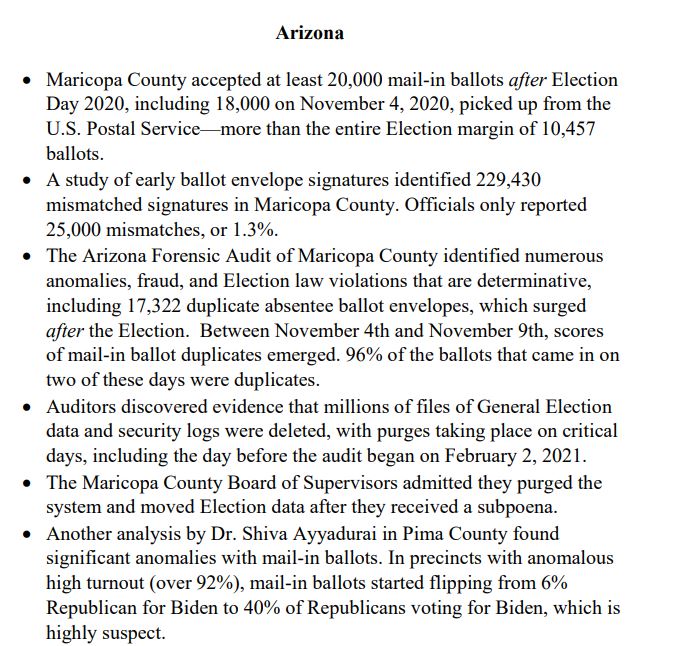
- An example of evidence of election fraud included in Trump’s letter to the committee
The letter listed numerous examples of evidence of election fraud and ballot problems recorded in the 2020 election in states like Arizona, Georgia, Michigan, Pennsylvania, and Wisconsin.
“You have not gone after the people that created the Fraud, but rather great American Patriots who questioned it, as is their Constitutional right,” Trump stated, scorching the committee’s inaction.
He concluded, “The people of this Country will not stand for unequal justice under the law, or Liberty and Justice for some. Election Day is coming. We demand answers on the Crime of the Century.”
Source: rsbnetwork.com
- Andy Ogles will be an outstanding Representative for Tennessee’s 5th Congressional District!
-
As the former and outstanding Mayor of Maury County, Andy knows how to Create Jobs, Grow the Economy, Keep our Neighborhoods Safe, and Protect our Constitutional Rights.
In Congress, Andy will Secure our Southern Border, Stop Inflation, Uphold the Rule of Law, and Defend our Second Amendment.
Andy Ogles is a tireless fighter for our America First agenda, and has my Complete and Total Endorsement!
- I have watched and known Congressman Lee Zeldin for many years. He is a great and brilliant lawyer who was a “must see” for others in Congress when they had a complex legal problem that was holding up legislation. Lee was strong on the Border, Crime, our great Military & Vets (like few others!), and fought hard to protect our 2nd Amendment, and succeeded. Lee Zeldin is a WINNER who GOT THINGS DONE. He will be a GREAT Governor of New York, and has my Complete & Total Endorsement. GOOD LUCK LEE!
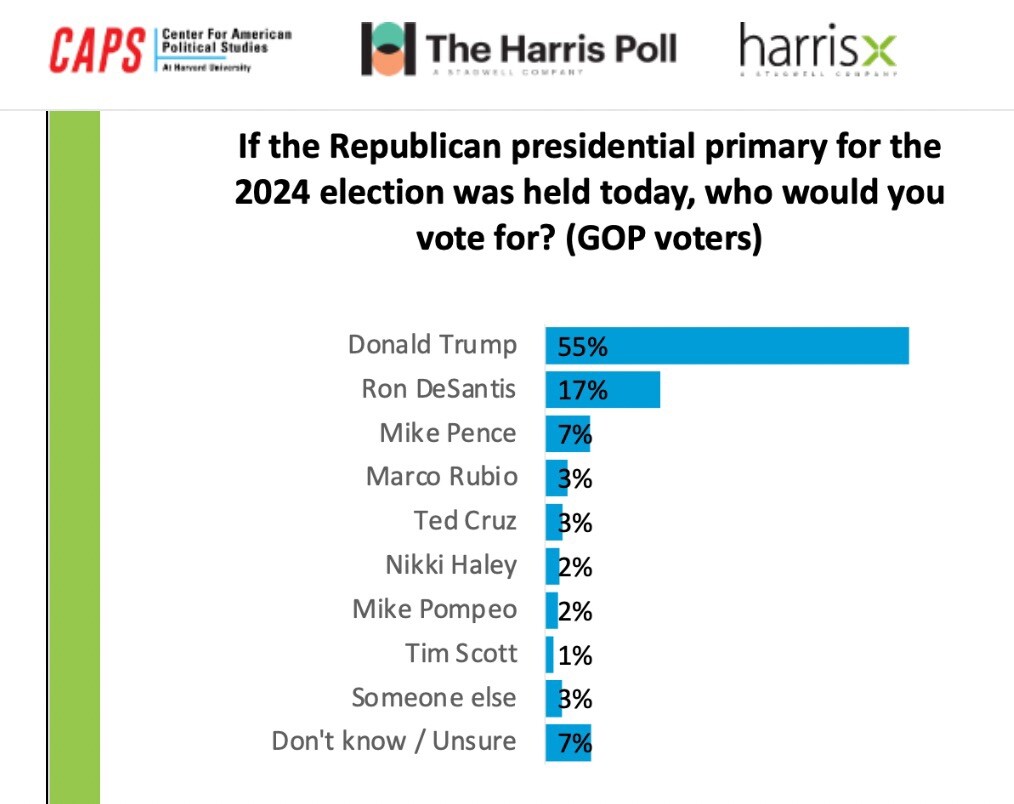
- FactCheck.org, which works with Facebook to “debunk misinformation”, wrote an article downplaying Eugene Yu’s arrest on the very same day that Yu was charged with giving Chinese contractors election data access.
- There’s nothing “misrepresented” about China having access to our election data.
- These Ministry of Truth propagandists need to be shamed into oblivion.
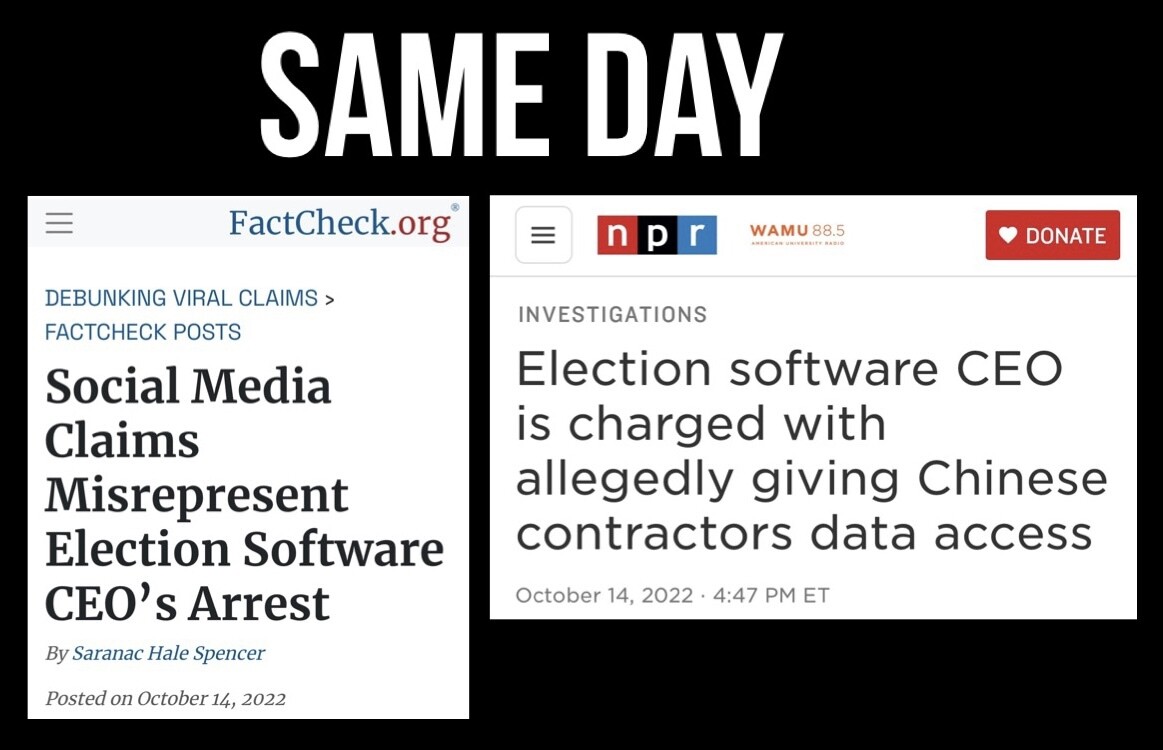
- Could this be what AZ Brnovich is mad about?
- True the Vote Calls Out Arizona AG Criminal Division Over ‘Mishandling’ Its ‘2000 Mules’ Complaint, Unmasking Informants
- @greggphillips @truethevote
arizonasuntimes.com/2022/09/05True the Vote Calls Out Arizona AG Criminal Division Over ‘Mishandling’ Its ‘2000 Mules’ Complaint, Unmasking Informants…
- After over a year of “good faith attempts to work together,” Texas-based election integrity nonprofit True the Vote’s Catherine Engelbrecht and lead investigator Gregg Phillips of the OPSEC Group, an election…
-
The Arizona Sun Times
- GOP Reps James Comer and Jim Jordan are probing whether or not the National Archives colluded with Democrats to go after Donald Trump.
- In a letter sent to the National Archives, they requested “all documents and communications between or among employees or agents of NARA and DOJ referring to or relating to the Trump administration’s control, transfer, storage, or other handling of documents subject to the Presidential Records Act.”
- NARA has “lost” massive amounts of information from past Presidents, including classified and nuclear secrets all over the place, and they don’t care, they only care about going after “Trump,” even though we’ve done everything right as per the Presidential Records Act and the Clinton “Socks” Case.
Donald J. Trump@realDonaldTrump
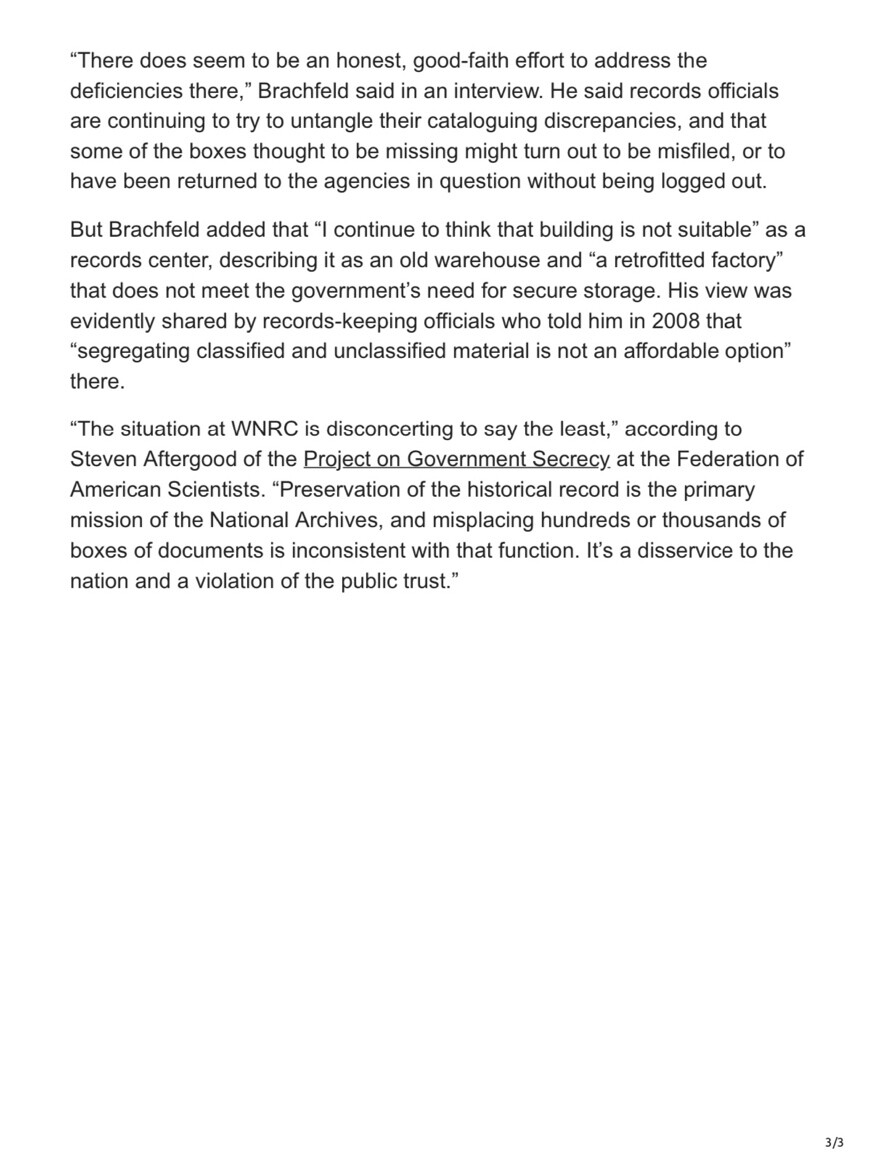
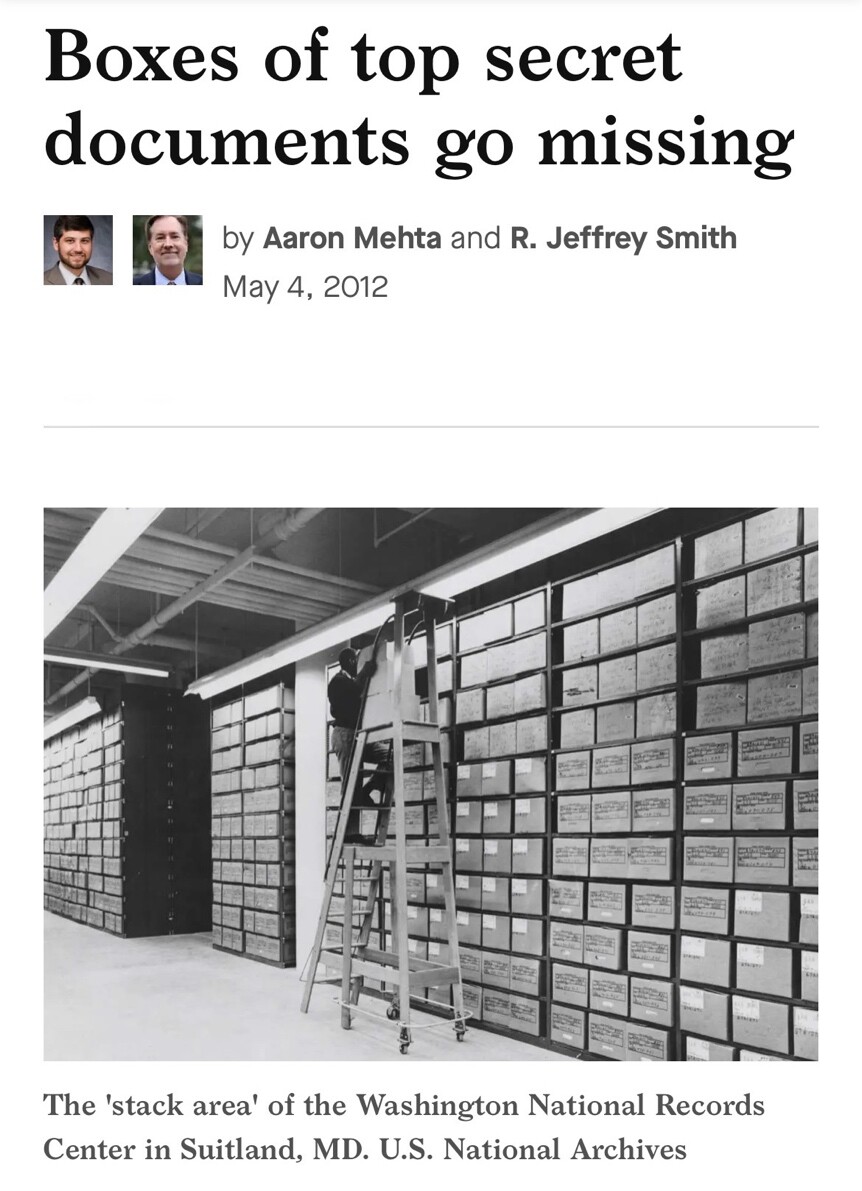
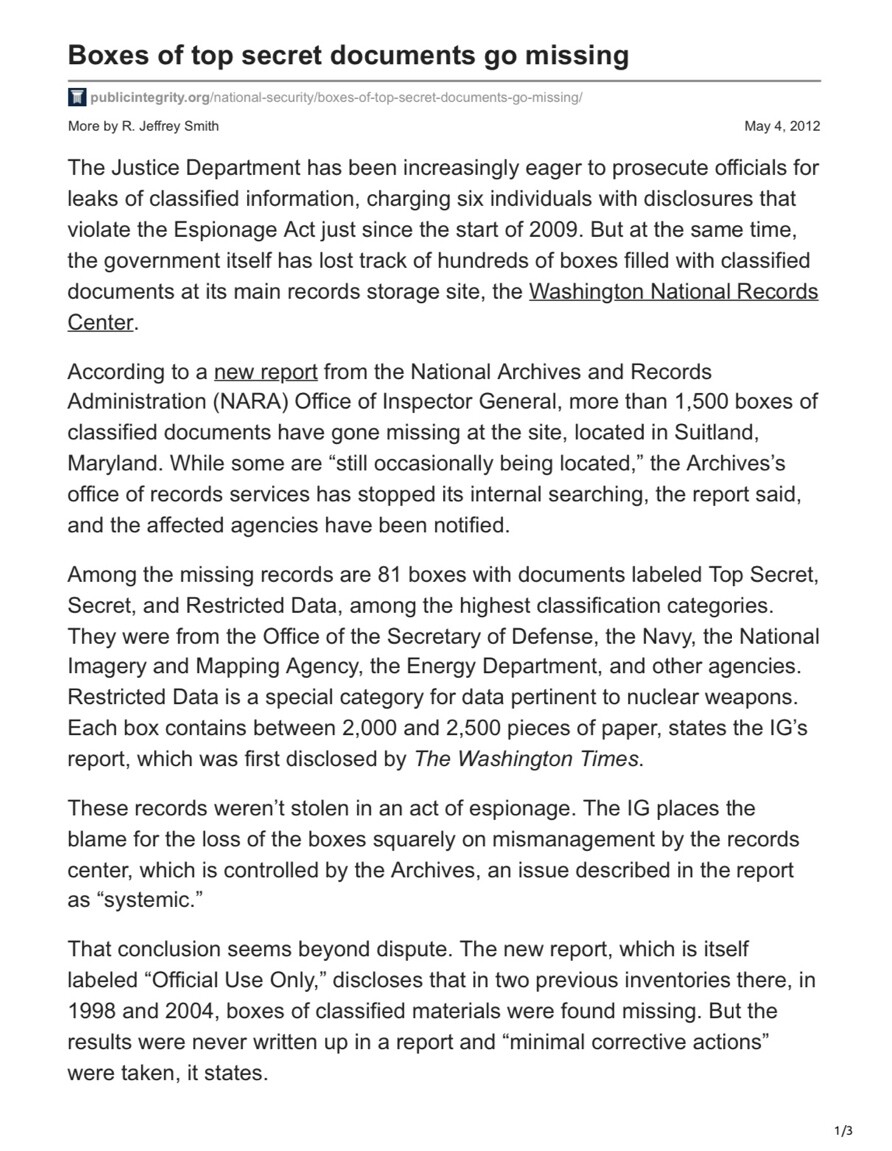
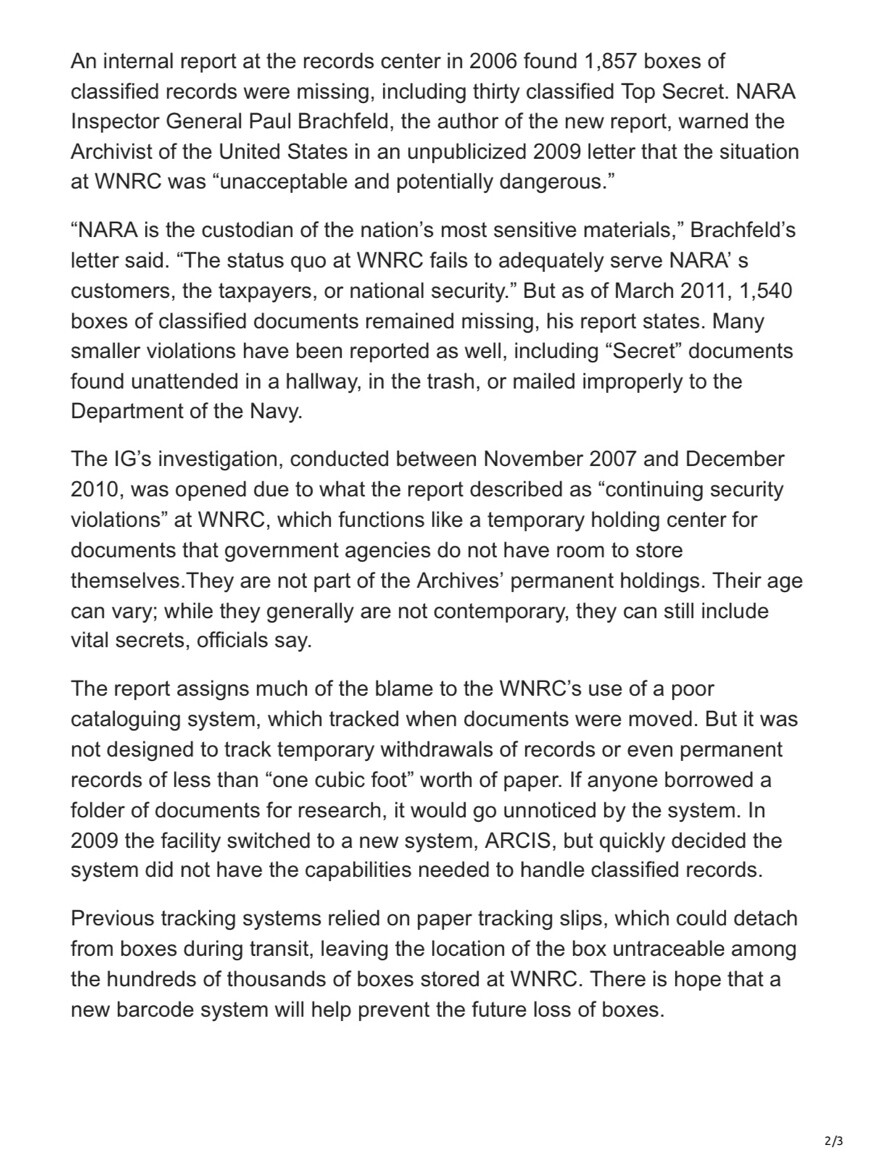
Anonymous ID: 4e0898 No.11192597
>>11192505
So many people refuse still to admit the evils in the world. They’re going to need to see a lot more.
Freedom of information [truth] = END
Q
The truth won’t be for everyone.
Have faith in Humanity.
Q
hunter_biden.jpg

“America’s Founders believed that corruption and foreign influence were among the gravest threats to our nation.”
Q

![Ep 2900b - Deep Dark World Is Being Exposed, Freedom Of Information [truth] = Game Over](https://x22report.com/wp-content/uploads/2022/10/youtube_newsbrief2_political_geo_layer-2-300x161.jpg)
![Ep 2900a - Trump: Taxes Have Consequences, [CB] On Deck](https://x22report.com/wp-content/uploads/2022/10/youtube_newsbrief2_financial_layer-2-300x167.jpg)


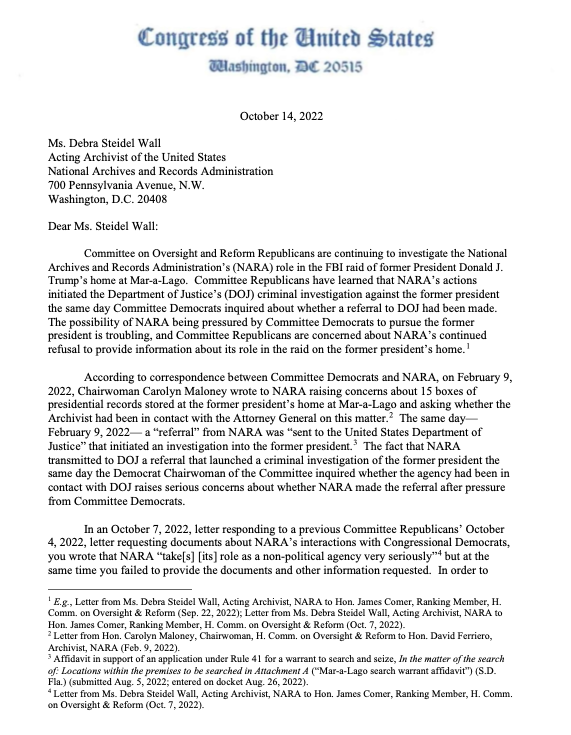
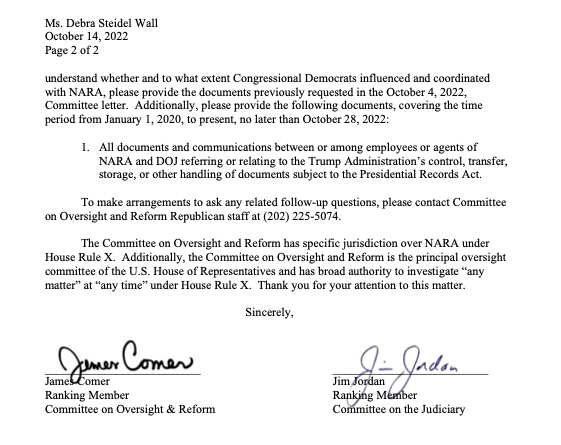

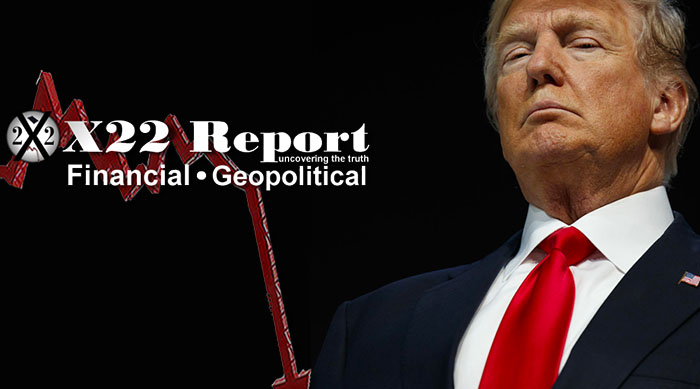
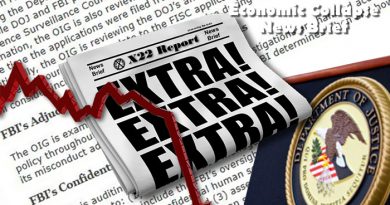
Pingback: Deep Dark World Is Being Exposed, Freedom Of Information [truth] = Game Over – Ep. 2900 – GAW.Social
M I 6. Not M16.
Big difference. But very interesting that you don’t know the difference between them. Once again. That’s “M” “I” 6. MILITARY INTELLIGENCE 5. You got me?
As in Military Intelligence
It’s not “M16” which is the standard issue weapon for the U S Military during the Viet Nam War and further on.
What a total load of crap! At least have the balls to share the truth. This process has taken too long. Trump is Not coming to save anyone. The military is not going to save anyone… We will have to wait another 2 years IF the rlection goes right